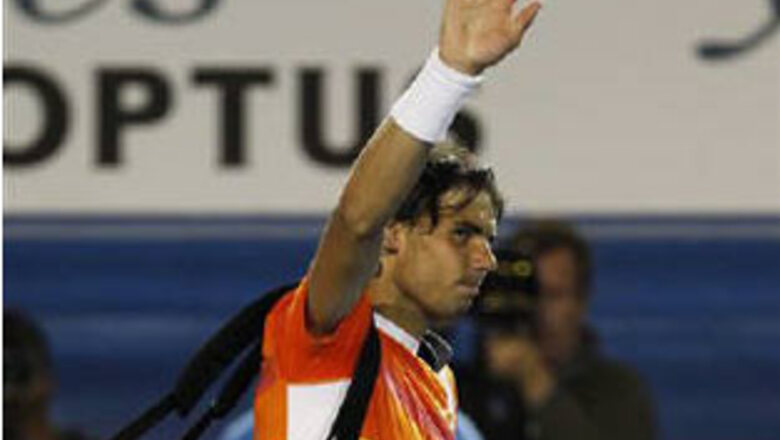
views
Melbourne: A year ago, Rafael Nadal was sprinting along the road to tennis immortality.
Twelve months later, the Spaniard has not so much slowed to a walk as stopped altogether.
The path ahead is suddenly not so clear, courtesy of a chronic knee injury. No-one, even Nadal, is quite sure how badly damaged the knee is.
It was bad enough to stop him from trying to defend his Wimbledon title in 2009 and bad enough for him to throw in the towel during his quarter-final against Andy Murray at the Australian Open on Tuesday night.
The match was midway through the third set and Nadal was already heading to defeat after losing the first two sets and dropping his opening serve in the third.
Nadal has built his reputation as one the fiercest competitors in the sport and he cut a forlorn figure as he hobbled to the net to shake hands with Murray, apologising for giving up.
His lame exit raised more questions about his future and could not have been any different than when he won the title in 2009, beating Roger Federer in an epic five-setter.
Federer was reduced to tears as Nadal accepted the winner's trophy from Rod Laver, the last man to win the coveted grand slam.
It seemed a symbolic moment. As Federer sobbed in the background, the tennis world was acclaiming the arrival of the new master.
It was the fifth time Nadal had beaten Federer in the final of the grand slam.
The first three victories were at the French Open, where Nadal ruled supreme, but he had also beaten him at Wimbledon and Melbourne Park, which should have favoured the Swiss.
Federer was closing in on Pete Sampras's record of 14 grand slams but his claim to the title of the greatest player of all time was suddenly on hold because of Nadal's meteoric rise.
When Nadal won the Australian Open he was 22 and already had six grand titles. At the same age, Federer had just won his first grand slam title. Sampras had three.
A year later Nadal still has six and the seventh has never looked so far away.




















Comments
0 comment